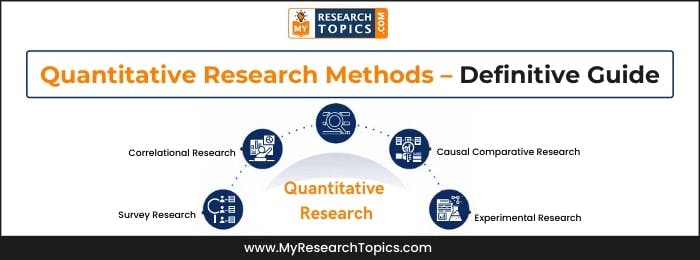Second Master’s or PhD? – A Comparison
Published 16 October, 2023
Synopsis
There are many reasons to pursue a second master’s degree or PhD, and the decision ultimately depends on your goals and interests. If you’re looking to further your academic career and research opportunities, a PhD may be the best option. However, if you want to gain additional skills and knowledge in a specific field, another master’s degree may be more beneficial.
Introduction
When it comes to choosing between a second master’s degree or PhD, there are many factors to consider. Your career goals and interests will play a large role in determining which path is right for you.
The end of a degree’s body is often filled with stress and uncertainty. Some students may take time off to explore other options, such as starting their career or continuing Education; but for those who want more structure in the final months before graduating – there’s no need to worry! There are plenty of options available.
The decision to do an additional degree often comes down between a second master’s and PhD. There are many factors that should be considered when making this choice, such as cost and duration for each type of program available in your country or whether you’re looking into getting specific career opportunities upon graduation from either one.
This article will provide a brief overview of each type of degree, its benefits and drawbacks, as well as some common questions that students ask about these programs.
What Is Second Master’s?
A second master’s degree is an academic degree earned after the completion of a bachelor’s degree and first master’s degree. Students who pursue a second master’s degree often do so to gain additional skills and knowledge in a specific field or to change careers.
Like the first, a second master’s degree generally takes two years of full-time study to complete. However, some programs may allow students to complete their degree in a shorter amount of time by enrolling in accelerated courses or by transferring credits from their first master’s degree.
Students who pursue a second master’s degree will typically take a mix of core and elective courses. Core courses generally focus on advanced topics in the field, while elective courses allow students to explore other areas of interest.
What Is a PhD?
A PhD, or Doctor of Philosophy, is the highest level of academic degree earned after completing a bachelor’s and master’s degree. Students who pursue a PhD do so with the goal of furthering their academic career or research opportunities.
A PhD generally takes 5-7 years of full-time study to complete. Students must also complete a dissertation, which is a research project that demonstrates their knowledge and expertise in the field.
Major Difference Between Second Master’s & PhD
-
Level of Specialisation
Second Masters
Second Master’s degrees are great if you want to learn more about a specific subject or expand your knowledge of different topics. For example, an MSc allows the student to specialise in their desired field while still learning various subjects that will be beneficial for them down the road and can assist with any future careers they may have considered trying out! PhDs offer unlimited opportunity due its breadth across all disciplines; however this does come at higher tuition fees than other types of Masters Programmes do which some people might not afford, or feel comfortable with taking on.
PhD
A PhD is the highest level of academic degree you can earn. It requires a lot of hard work and dedication, but it also gives you the chance to specialize in your field of interest. You’ll be able to conduct research and contribute new knowledge to the field. Unlike Second Master’s degrees, PhDs offer the chance to teach at the collegiate level and beyond.
2. Duration of Program
Second Masters
The duration of a Second Master’s degree program can vary depending on the country you study in and the type of institution. In the United States, for example, most programs take two years of full-time study to complete.
PhD
The duration of a PhD program can also vary depending on the country you study in and the type of institution. In the United States, for example, most programs take five to seven years of full-time study to complete.
3. Curriculum
Second Masters
The curriculum for a Second Master’s degree can vary depending on the country you study in and the type of institution. In the United States, for example, most programs require coursework in research methods, statistics, and writing. Students also complete a thesis or capstone project.
PhD
The curriculum for a PhD can vary depending on the country you study in and the type of institution. In the United States, for example, most programs require coursework in research methods, statistics, and writing. Students also complete a dissertation, which is a research project that contributes new knowledge to the field.
4. Cost of Degree
Second Masters
The cost of a Second Master’s degree can vary depending on the country you study in and the type of institution. The average annual cost for the Second master’s is £8,860 (Home/EU), and £17,493 (International).
PhD
Similarly, the cost of a PhD can vary depending on the country you study in and the type of institution. On average, the annual cost for PhD is £4,407 (Home/EU), £19,600 (International) and full programme average cost is £17,628 (Home/EU), £78,400 (International).
5. Job Opportunities
Second Masters
Second Master’s degrees can lead to a variety of different job opportunities. Many students use their degrees to change careers or advance in their current field. Others use their degree to enter into a new field or start their own business.
PhD
A PhD can open up many doors, both in terms of job opportunities and research opportunities. Graduates can pursue careers in academia, government, or industry. They can also use their degree to further their education and career goals.
Advantages and Disadvantages: Second Master’s & PhD
Advantages of Second Master’s |
Disadvantages of Second Master’s |
|
|
Advantages of PhD |
Disadvantages of PhD |
|
|
Conclusion
So, these are some of the advantages and disadvantages of a Second Master’s degree and a PhD. Deciding whether or not to pursue one of these degrees depends on your specific goals and circumstances. If you’re considering either degree, be sure to weigh the pros and cons carefully to make the best decision for you.
Other Related Guides
- Research Project Questions
- Types of Validity in Research – Explained With Examples
- Schizophrenia Sample Research Paper
- Quantitative Research Methods – Definitive Guide
- Research Paper On Homelessness For College Students
- How to Study for Biology Final Examination
- Textual Analysis in Research / Methods of Analyzing Text
- A Guide to Start Research Process – Introduction, Procedure and Tips
- Research Findings – Objectives , Importance and Techniques
- Topic Sentences in Research Paper – Meaning, Parts, Importance, Procedure and Techniques












